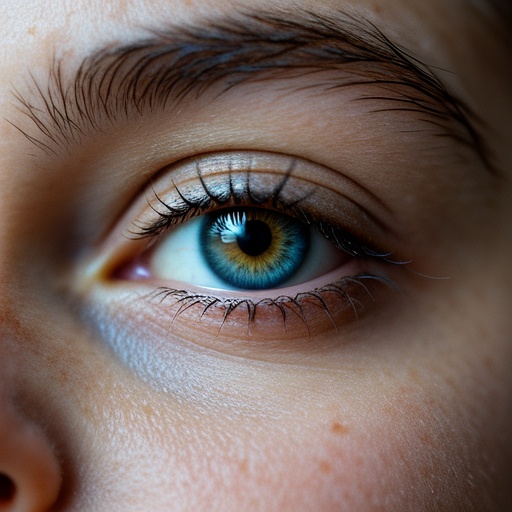Why Eye Color Can Change as You Age
 As people age, it's not uncommon for some to notice a slight change in their eye color. This phenomenon can be attributed to a combination of physiological and environmental factors.
As people age, it's not uncommon for some to notice a slight change in their eye color. This phenomenon can be attributed to a combination of physiological and environmental factors.
 One of the primary reasons lies in the changes within the iris, the colored part of the eye. The iris contains pigment - producing cells called melanocytes, which are responsible for the amount and distribution of melanin, the pigment that gives eyes their color. In infants, the iris may not have fully developed, and melanocytes gradually produce more melanin in the first few years of life. This is why many babies are born with blue eyes that may darken over time. As we age, the melanocytes can become less active. The production of melanin may decrease, leading to a lightening of the eye color. For example, brown eyes may appear to have a more hazel - like tone as the amount of melanin in the iris reduces.
One of the primary reasons lies in the changes within the iris, the colored part of the eye. The iris contains pigment - producing cells called melanocytes, which are responsible for the amount and distribution of melanin, the pigment that gives eyes their color. In infants, the iris may not have fully developed, and melanocytes gradually produce more melanin in the first few years of life. This is why many babies are born with blue eyes that may darken over time. As we age, the melanocytes can become less active. The production of melanin may decrease, leading to a lightening of the eye color. For example, brown eyes may appear to have a more hazel - like tone as the amount of melanin in the iris reduces.
Another contributing factor is the accumulation of debris and changes in the connective tissue of the iris. Over the years, the iris can experience a build - up of substances such as lipids and proteins. These deposits can scatter light differently, altering the way we perceive the eye color. Additionally, the connective tissue in the iris can become more rigid and less elastic with age. This structural change can affect the distribution and density of the pigment, causing a shift in the appearance of the eye color.
Environmental factors also play a role. Long - term exposure to sunlight can have an impact on the iris. Ultraviolet (UV) rays can damage the melanocytes in the iris, potentially leading to changes in melanin production. People who have spent a significant amount of time outdoors without proper eye protection may be more likely to experience eye color changes. Certain medications can also cause alterations in eye color. For instance, some drugs used to treat glaucoma can affect the pigmentation of the iris over time.
In conclusion, the slight change in eye color as people age is a complex process influenced by internal factors such as the natural decline of melanin production and structural changes in the iris, as well as external factors like sunlight exposure and medication use.










